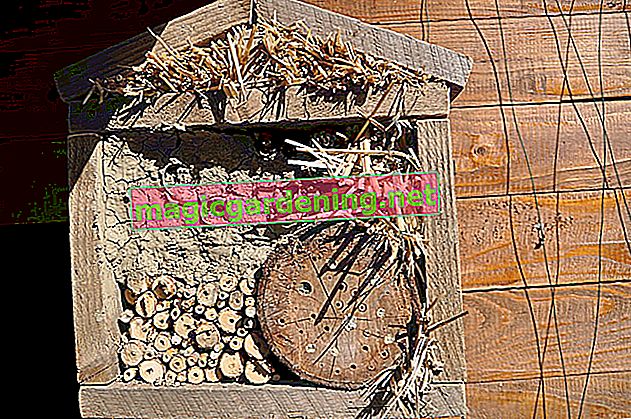
Requirements for the clay
Bees use existing holes in the clay to lay eggs as well as their own breeding grounds. For this reason, your clay must not be too firm so that the insects can dig their own nest holes. Above all, the right ratio between clay and sand is crucial. The more sand the mixture contains, the easier it is for the animals to dig. Conversely, the clay walls threaten to crack and crumble if they contain too much sand. Furthermore, residues such as
- straw
- reed
- or stones
also read
- Bamboo sticks in the insect hotel
- When do bees hatch in the insect hotel?
- Locked holes in the insect hotel
the work of bees.
Find the right balance
- Mix clay and sand in different proportions (small amounts are sufficient).
- Shape each mixture into balls.
- Make a note of the mix ratio.
- Let them dry in a shady, dry, well-ventilated place.
- Scratch the balls with your fingernail.
- If you can do this, the bees can dig into the clay too.
- Experience has shown that a recommended ratio is 1: 1.
- Depending on the nature of the clay or the sand, deviations may arise.
Fill the insect hotel with clay
- First fill the clay mixture into terracotta pots before you install them in the insect hotel (€ 8.87 on Amazon *).
- Hollow paving stones or bricks are also suitable.
- Gradually fill the pot with small amounts.
- Press the clay in between times with a block of wood. so that no cavities arise.
- Use a stick to drill holes 2-3 cm deep in the clay.
- The diameter should be about 6-8 mm.
- Let the clay in the pots dry in a shady place.
- Make sure there is good ventilation to prevent mold from forming.
- This can sometimes take several weeks.
- In the insect hotel, the clay should be protected from moisture (no ground contact).








